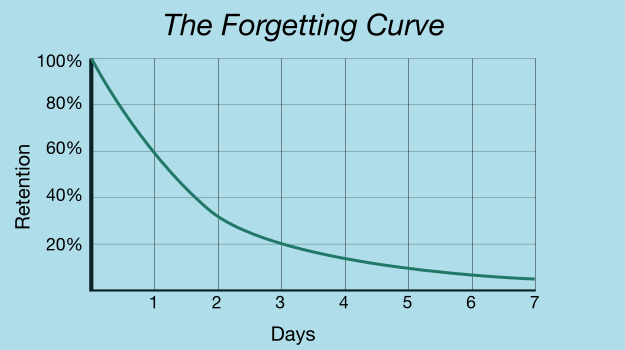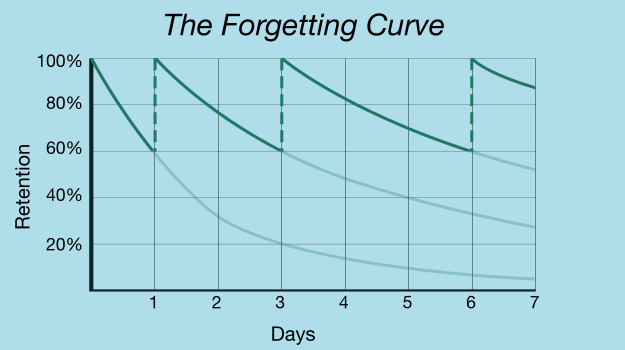We all know that learning Spanish is not an easy task, right? Not to mention fast. One thing’s for sure: if somebody tells you that anyone can learn Spanish easily in a couple of months (or while sleeping!), then you can be sure that somebody is trying to deceive you.
However, I’m going to argue that learning Spanish can be easy. How’s that possible?
Don’t make these mistakes when learning Spanish
Many people don’t realize this, but there are two frequent mistakes people make that make language learning an unnecessarily difficult task:
Not finding the right pace. Learning Spanish in a short time is “possible”, but it requires an intensive course and/or a real language immersion, which is expensive and hard. Very hard. If, instead of trying to learn everything at once, you focus on learning one “piece” at a time, you will find it considerably easier. Learning Spanish at a natural pace is a lot more bearable. But it takes time. Accept it.
Not leveraging psychology. Luckily for us, psychology and neuroscience have been for a long time studying how our brain acquires new knowledge in general, and a new language in particular. Many key concepts have arisen from these studies: forgetting curve, comprehensible input and many more.
The following tips will help you to learn Spanish at your own pace in a series of easy steps.
1. First, gather the best learning materials
Get hold of all the necessary materials to acquire, let’s say, a basic Spanish level. Then make a detail (and realistic) plan to use those materials step by step until you master them. Establish a routine and make it a habit: words per day, chapters per week, etc.
Here you have a list of learning materials that you’ll need at this stage:
- Grammar. You will need something to learn the Spanish grammar step by step. It can be a book, a textbook or an app, but it’s critical to choose a good one and, if possible, with accompanying audio examples.
- Dictionary. You’ll want to find a good Spanish dictionary. It can be a book, but there are also some good online Spanish dictionaries. If you choose one of these, I recommend to set up a browser search shortcut. That way, you’ll always be able to find any word in a matter of seconds.
- Basic vocabulary. Any native speaker knows thousands upon thousands of words, but just the first thousand words account for around 75% of everyday speech. Focus on those frequent words and you’ll soon begin recognizing many of them on texts, TV, radio and the Internet.
- Reading materials. Begin with easy texts, like comic strips for children or something like that. Then gradually build your way up to more complex texts. Ideally, they should be interesting to you and a little bit challenging (not too much).
- Audiovisual material. If possible, choose materials with subtitles or transcriptions available. It doesn’t matter if you don’t understand some words, you can always revisit them later. What matters is that you train the parts of the brain responsible for interpreting the words you hear. If you understand nothing at all, look for other sources, accents, etc. At the most basic levels, the audio examples in your textbook should be enough.
2. Fight forgetfulness
One of the most useful discoveries for language learning was made in the late 19th century. It’s the forgetting curve. The German psychologist Hermann Ebbinghaus spent years memorizing nonsense syllables and recording the time it takes to forget them. The result of this experiment was a graph that shows how memories fade non-linearly over time.

What this has to do with Spanish learning? Easy. Whether you like it or not, learning Spanish involves committing lots of words to memory. If your memorization and retention strategies suck, much of your efforts will be wasted.
Luckily, as a result of the discovery of the forgetting curve, science has developed the most efficient memory strategy known to mankind: spaced repetition (typically using flashcards). Spaced repetition consists of reviewing material at increasing time intervals so that the forgetting curve being less and less pronounced with each review.

There are spaced repetition apps, such as Anki or MemRise, but it is also possible to just use paper flashcards. The principle is simple: each flashcard has a question (say: Spanish for cat) and an answer (gato). You read the question and try to recall the answer, then you flip the flashcard to see if you got it right. If you forgot or were wrong, you put the card on a stack of high priority cards for sooner review. If it was easy, you put it on a stack of easy cards, which are reviewed less frequently. This way, you take the most out of your reviewing time.
Note: Of course, learning Spanish is much more than just memorizing individual words. However, you can’t learn Spanish easily without, one way or another, memorizing words in the first place (you need bricks to build a wall, right?). Spaced repetition is just the most efficient way to have all the bricks you need within easy reach.
3. Learn one thing at a time
There’s an appropriate order to learn things in a language, which resembles the order in which babies learn their mother tongue. The main difference is that, of course, second language acquisition usually involves both spoken and written language at the same time.
This order is important to make learning Spanish as easy as possible. For example, if you try to learn vocabulary before having a good grasp of the phonetics, you may easily confuse similar words and you’ll find it difficult to recognize words when you hear them.
An appropriate order could be something like this (some of the steps could be made more or less in parallel, though, if you feel like it):
- Alphabet and orthography: study the letters of the alphabet and their rules of pronunciation (this is relatively easy in Spanish). Also, learn the meaning of all those strange characters (¿, ¡, ¨, ´, º, ª). This shouldn’t take more than a few days.
- Phonemes (sounds): learn to distinguish subtle differences in sounds. For example, una vs uña, begonia vs Begoña, esta vs está, and so on. Minimal-pair training is one way of achieving this.
- Basic vocabulary (with emphasis on phonetics). As said above, spaced repetition helps a lot with this.
- Pronunciation. In the meantime, you can practice the pronunciation of difficult phonemes, like ñ or the trilling r’s (you can do this at any time wherever you are, while preparing breakfast or in the shower, for example).
- Grammar. Once you have enough good quality “bricks”, start building the wall. Follow the textbook at your own pace, putting emphasis on practical applications. Do the exercises to test your knowledge and try to find more examples in other texts or audios.
- Read. Read as much as you can. Start with easy readings and gradually increase the difficulty. Notice that this will give you a lot of opportunities to reinforce many words you learned in step 3. Take note of unknown words that you find important and incorporate them to your favorite spaced repetition system.
- Train your ear. Written and spoken languages are two different beasts, you have to train them both or your language acquisition will never be complete. Use the audio material for that.
- Write. A lot. Write about you or anything else that comes to your mind. Then, and this is important, share your sentences with natives to receive feedback. There are online platforms that you can use for that (see below).
- Speak. When you can confidently understand spoken Spanish and form coherent written sentences, begin practicing conversation. Again, you can do this online, but even talking to yourself can be helpful to “train your tongue” and to discover gaps in your vocabulary.
4. First understand Spanish, then talk Spanish
Even though practicing pronunciation of difficult sounds is useful at any stage, the priority at the beginning should be reading and listening comprehension. After all, it doesn’t make much sense to try to speak a language you barely understand. Once you have good comprehension abilities, that will be the time to start communicating, both verbally and in writing.
In fact, there’s theory called silent period, which says that, when you learn a language, it is natural to focus first on processing and understanding what you hear, without trying to talk. Only when you have a good grasp of the language, then you’ll have the tendency to start talking. This is especially true in the case of children.
5. Seek help
At first, you can progress very fast by yourself, but as your level increases, it’s best to find someone to correct your errors and help you to express yourself in a more native-like way. This is very important, because if nobody corrects your errors, then these errors tend to eventually “fossilize” in your brain, so it’s more difficult to eradicate them.
Fortunately, nowadays there are many online platforms where you can show your sentences, both written and spoken, to native speakers of Spanish. Some of such platforms are italki, HiNative or Lang-8, but there are many more. Find the one that better suits you.
Finally, some general advice
Motivate yourself. Don’t shoot yourself in the foot by choosing materials you don’t enjoy just because they are the “recommended” ones. Choose readings that you find interesting, funny videos, etc. Focus on enjoying your learning activities. Also, where possible, master first the easiest parts of the language in order to gain confidence to deal with the hard ones.
Divide and conquer. In Spanish, there are some concepts that are hard to understand, like the difference between ser and estar, when to use the subjunctive mood, etc. Decompose them and focus on one aspect at a time. For example, learn first the most frequent uses of ser and estar, or only the present subjunctive of the regular verbs.
Ultimately, the key to learning Spanish easily is to know yourself, be motivated at all times and build your knowledge of the language as if it were a building: beginning with solid foundations, and then one brick at a time, in the right order.